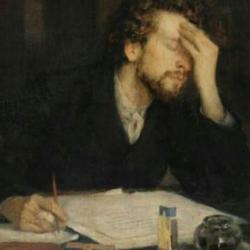In an article in Studies in English Literature (2004), Michael Karounos notes that “The meaning of ordination was not restricted in 1814 to the meaning of assuming a religious office, nor, indeed, was that its primary definition. A glance at the OED demonstrates that trees, animals, and ideas may all be ordinated. Sub-ordination, as a disposition of ranks or in reference to a hierarchical order, is implicit in the understanding of the term, and only after considering the range of meanings – and especially the primarily meaning that Austen would have understood in its fullness – may we arrive at a better understanding of her much-quoted, much-misunderstood, and always-controversial statement that Mansfield Park is about ordination.”
Karounos suggests that ordination refers mainly “to the state of Mansfield Park and to the person of Fanny Price.” In this sense, ordination means “a process of both ordering and ordaining. What is ordained in Mansfield Park is not only the estate but also its hierarchy, and the person to be ordained first – in fact as well as in degree of importance – is Fanny Price.” Ordering must take place because chaos has infected “not only Ecclesford (culturally), but the domains of Norfolk and London (morally), Sotherton (spiritually), Portsmouth (familially) and Mansfield Park (socially).”
Karounos says, appealing to the work of Edmund Burke (whose first name is shared by Austen’s hero) “the concepts of ordination, improvement, and restoration have their antithetical counterparts in subordination, innovation, and revolution.” Innovation and revolt, he says, are signified in the novel by everything “from the trivial arrangement of furniture to modes of movement and social interaction. ” Mrs. Norris is described as a “restless, officious companion,” and this restlessness is described as an evil. Mary is much the same: She “must move . . . resting fatigues me.” Everywhere, “Furniture, people, morals, and ideas all undergo a revolutionary upheaval that introduces disorder into the estate, into relationships, into the psychological well-being of individuals.”
In conclusion, Karounos writes: “Restlessness in the Crawfords reflects the extreme of social innovation in which too much change is introduced, while the indolence of Lady Bertram reflects the extreme of social stagnation in which there is too little change. For Austen, neither extreme is beneficial to the estate or to the country. Consequently, the balancing mode of principled behavior in Fanny and Edmund reflects a positive if gradual movement in the moral and social sphere as a mean between extremes. The example of Mr. and Mrs. Bertram presents a level of inactivity that is amoral and threatens the institution with decay; the examples of Henry and Mary Crawford present a level of activity that is immoral and threatens the estate with revolution. The Bertrams are incapable of correctly managing the estates; the Crawfords wish to overthrow it. In the Bertrams and the Crawfords, Austen figures the twin evils of the novel: self-centered solitude versus self-centered restlessness.” Edmund, by contrast, “provides a new paradigm of responsible civil management that the lords of misrule lack, while Fanny contributes a degree of faith-based morality that the supper-class women lack.” In this, Austen gives a novelistic rendition of the Burkean ideal: “a state without the means of some change is without the means of its conservation.”















